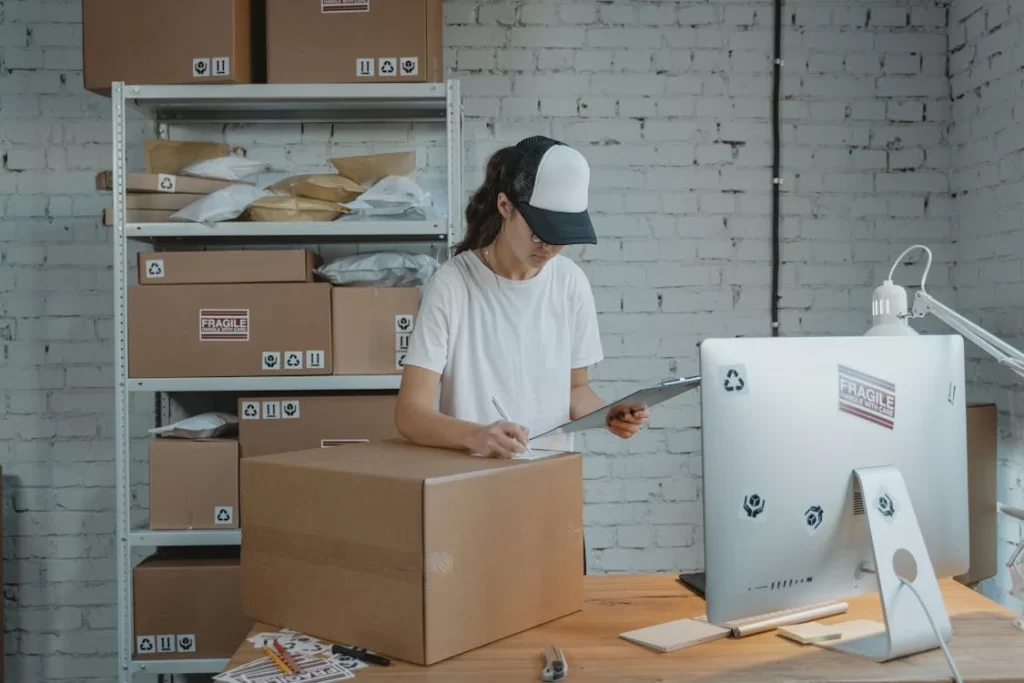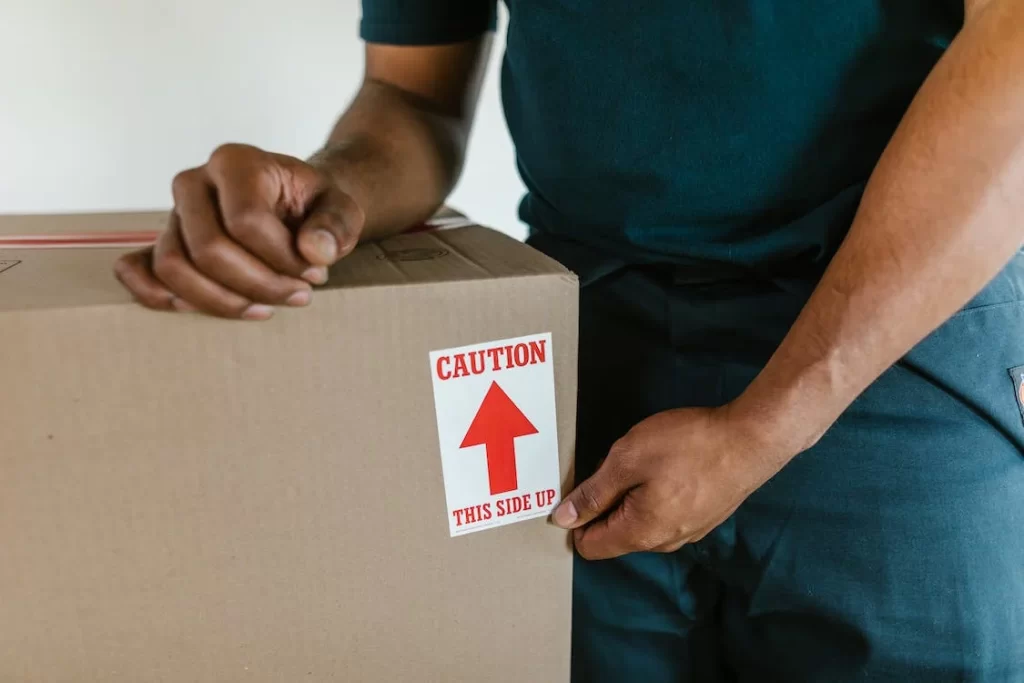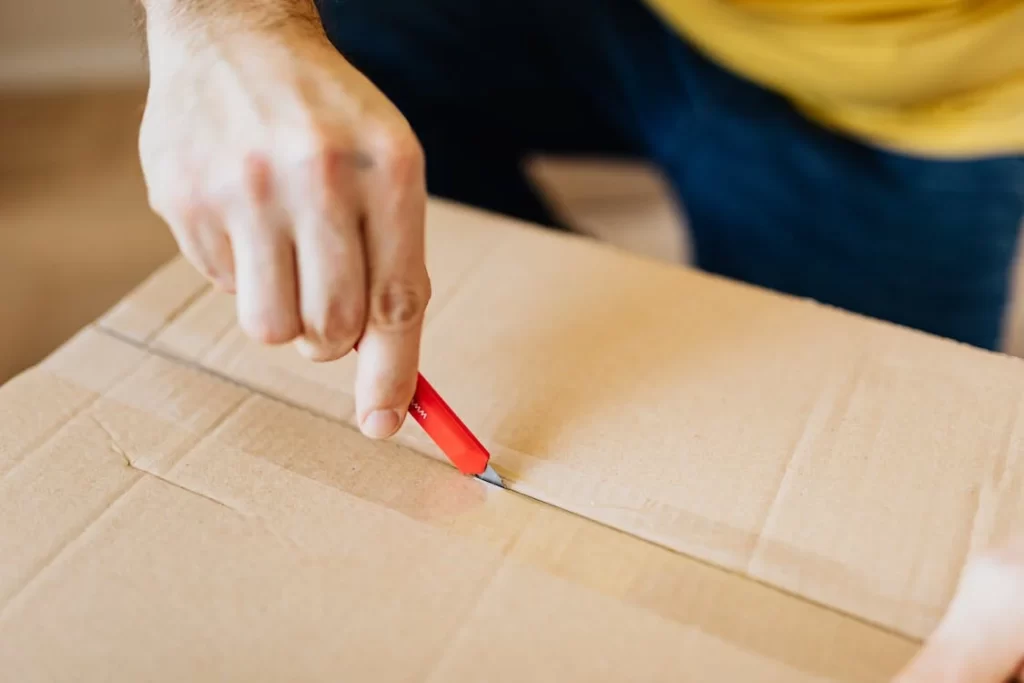Table of Contents
- The Significance of Professional Packing
- Challenges in Office Moving
- Why Efficient Packing is Crucial
- Pre-Move Preparation
- Planning Your Packing Strategy
- The Packing Process
- Organizing and Decluttering Before the Move
- Security and Compliance
- Moving Day and Beyond
- Conclusion
- Ready to Make Your Office Move Stress-Free?
When it comes to relocating an office, meticulous planning and execution are paramount. The complexity of office moving goes beyond mere physical transportation; it involves a strategic alignment of logistics, packing, and minimal operational disruption. This is where professional office moving services come into play, transforming a potentially chaotic experience into a streamlined process.
The Significance of Professional Packing
Effective packing stands as a critical pillar in the process of office moving. Not only does it safeguard valuable business assets during transit, but it also ensures that the unpacking phase is orderly and efficient, thereby reducing downtime. Engaging with experienced office movers can provide peace of mind, knowing that every item, from high-tech equipment to sensitive documents, is handled with care.

Challenges in Office Moving
Relocating an office comes with its unique set of challenges:
- Minimizing Business Interruption: Ensuring that the business remains operational during the move.
- Protecting Sensitive Information: Handling confidential documents and data with utmost security.
- Logistical Coordination: Synchronizing all facets of the move, from packing to setup in the new location.
By incorporating the expertise of commercial movers and office packers and movers, businesses can navigate these challenges effectively. The right movers not only enhance efficiency but also bring a level of expertise that significantly mitigates the potential for error and oversight.
Why Efficient Packing is Crucial
Efficient packing affects several layers of the moving process:
- Asset Protection: Proper packing techniques ensure that everything from office furniture to electronics is protected against damage.
- Time Management: Well-organized packing helps in speeding up both the loading and unloading processes, thus reducing the overall move time.
- Cost-Effectiveness: Efficient use of packing materials and space can directly impact the overall cost of moving.
The upcoming sections of this guide will delve deeper into each aspect of the packing process. From assessing your packing needs to setting up a detailed plan, and from organizing your current space to securing sensitive information, we will cover everything you need to ensure a smooth transition. By adhering to these guidelines, your office moving experience with commercial movers will be nothing short of a success.
Pre-Move Preparation
Proper preparation is the bedrock of a successful office moving project. Before you pack a single box, a detailed assessment and strategic planning must take place to ensure everything runs smoothly on moving day.
Assessing Your Office Packing Needs
The first step in your preparation is a thorough assessment of your current office space and the items within it. Here’s how to evaluate your packing needs effectively:
- Evaluate Office Size and Content: Understand the scale of your move by measuring the square footage of your office and noting the quantity and types of items that will be moved. This includes furniture, technology, and documents.
- Inventory of Essential Items: Create a detailed list of all items, prioritizing essential equipment and documents that need special handling or insurance coverage.
- Special Considerations for Fragile and High-Value Items: Identify items that require special packing attention or security measures, such as artwork, sensitive electronics, or confidential files.
This initial step will help you communicate your specific needs to your chosen commercial movers, ensuring they are well-prepared to handle your unique requirements.
Time Management Strategies for Office Moving
Effectively managing time is crucial in minimizing business disruption during a move. Here’s how to keep your office moving timeline on track:
- Developing a Realistic Timeline: Work backwards from your move-in date to schedule every phase of the move, from packing to relocation to unpacking.
- Setting Priorities and Deadlines: Prioritize tasks based on their importance and impact on your business operations. Establish clear deadlines for each phase to keep everyone on schedule.
Team Collaboration and Responsibilities
A successful move requires teamwork. Engage your staff early in the process by assigning roles and responsibilities:
- Role Assignments for Packing: Designate team members to oversee different areas such as technology, furniture, and documentation. This helps streamline the packing process and ensures that all areas are covered.
- Communication Strategies for Coordination: Regular meetings and updates are essential to ensure everyone is on the same page. Use tools like shared calendars and task management software to keep track of progress and deadlines.

Planning Your Packing Strategy
With a clear understanding of what needs to be done, the next step is creating a packing strategy that aligns with your business operations and moving schedule.
Creating a Comprehensive Office Packing Plan
A well-thought-out packing plan is essential for an efficient move. Consider these steps to ensure nothing is overlooked:
- Detailed Checklist for Each Department/Area: Develop a packing checklist for each department to ensure all items are accounted for. This checklist should be detailed, down to the number of boxes and types of packing materials needed.
- Packing Sequence and Prioritization: Decide the order in which rooms and items will be packed. Start with non-essential items and areas to minimize disruption to daily operations.
Packing Supplies and Inventory Management
Choosing the right packing materials can make a significant difference in the protection of your assets during the move:
- Choosing the Right Materials for Different Items: Invest in quality boxes, bubble wrap, and packing tapes. Specialty items may need custom solutions like crate packing or anti-static packing for electronics.
- Efficient Use of commercial movers and Packing Equipment: Coordinate with your office movers to utilize their equipment and expertise, particularly for heavy or large items.
Labeling Techniques for Efficiency
Proper labeling saves time during both loading and unloading:
- Systematic Labeling for Easy Unpacking: Use a uniform labeling system that includes information about the contents, the office room destination, and handling instructions.
- Color-Coding and Numbering System: Assign colors to different departments or areas for quick identification. Number the boxes to keep track of them during the move and ensure all are accounted for.
These detailed steps not only prepare your office for a smooth transition but also align with the services of your office packers and movers to create a seamless moving experience. This strategic approach minimizes downtime and sets your business up for a successful start in its new location.
The Packing Process
Effective packing is essential for safeguarding your assets during relocation and ensuring that all your office contents reach their new destination in pristine condition. Here’s a detailed approach to managing the packing process meticulously and strategically.
Specialized Packing Techniques
Different office components necessitate tailored packing strategies to ensure their integrity and safety during the move:
How to Pack IT Equipment and Electronics
Electronics and IT equipment are the lifeblood of modern offices, requiring special attention during a move:
- Use Anti-Static Bubble Wrap: Prevent static electricity from damaging sensitive components by using anti-static bubble wrap.
- Secure Padding and Boxing: Employ multiple layers of secure padding and place items in sturdy, size-appropriate boxes to minimize movement and potential damage.
- Original Packaging: Whenever possible, repack items in their original packaging, which is designed to protect the item during transport.
- Data Backup: Prioritize the safety of your data by ensuring all information is backed up on external drives or cloud services before moving day.
Handling Legal and Sensitive Documents
Legal documents and sensitive information demand heightened security to prevent data breaches or losses:
- Secure Locking Mechanisms: Utilize strong, lockable file cabinets or security boxes for transporting such documents.
- Digital Backups: Convert physical files to digital formats when feasible, storing them securely on encrypted drives or secure cloud networks.
- Access Controls: Limit who can access these sensitive materials during the move to designated personnel to enhance security.
The proper packing of these critical items requires not only attention to detail but also specialized knowledge that experienced office movers can provide.
Furniture and Large Items
Office furniture and large fixtures present unique challenges due to their size and the need for disassembly:
Disassemble Larger Pieces
- Preparation: Before disassembly, take photos and make notes on the assembly process to aid in reassembly at the new location.
- Organize Components: Store screws, bolts, and other small parts in clearly labeled bags that are attached to their respective furniture pieces or stored together in a designated container.
Wrap Fragile Components
- Protect Surfaces: Use furniture pads, bubble wrap, or moving blankets to cover delicate surfaces and edges to prevent scratches or other damage.
- Secure Wrapping: Ensure that the wrapping materials are securely taped so they don’t slip during handling or transport.
These procedures ensure that large and bulky items are moved efficiently and without damage, ready to be reassembled and used in the new office layout.

Organizing and Decluttering Before the Move
Reducing the volume of items to move can significantly cut down on costs and streamline the entire moving process:
Strategies to Reduce Load and Optimize Packing
- Audit Office Inventory: Conduct a thorough review of all office assets to identify which items are essential and which can be discarded, donated, or sold.
- Declutter Unnecessary Files and Equipment: Remove outdated documents and broken or obsolete equipment that clutters your office space.
- Donation and Recycling Programs: Engage with local charities and recycling programs to dispose of unwanted items responsibly. This not only clears space but also contributes to your company’s CSR objectives.
- Sell Off Redundant Furniture: If certain pieces of furniture will not fit or serve the purpose in the new office, consider selling them to fund new items that better suit the new environment.
A methodical decluttering process not only simplifies the packing and moving effort but also helps in setting up a more organized and efficient office space in your new location.
Security and Compliance
Moving an office involves handling sensitive information and ensuring that all operations comply with relevant laws and regulations.
Protecting Sensitive Information
The security of both physical and digital data is paramount during an office move:
- Securing Digital Data and Physical Files: Utilize encrypted digital backups and secure transport methods for physical files. Limit access to sensitive data to authorized personnel only.
- Compliance with Privacy Laws and Regulations: Ensure that your move complies with all relevant privacy laws, such as HIPAA for medical offices or FERPA for educational institutions, which govern the handling of sensitive information.
Risk Management During Office Moving
Mitigating risks is essential to prevent losses and ensure continuity:
- Insurance and Liability Considerations: Verify that your office movers have adequate insurance to cover potential damages. Review your own insurance policies to understand what is covered during the move.
- Contingency Planning for Unexpected Issues: Have a plan in place for unforeseen delays and obstacles. This might include having backup movers on call or securing additional insurance for high-value items.

Moving Day and Beyond
The culmination of your office move involves a strategic transition from the old space to the new one, ensuring that your operations can resume smoothly and efficiently with minimal downtime.
Coordination and Logistics on Moving Day
Effective communication and meticulous coordination with your commercial movers are essential for a smooth transition:
Working with Office Movers to Ensure Smooth Execution
- Pre-Move Confirmation: Conduct a final confirmation with the office movers to ensure all details are aligned, including the schedule, inventory list, and special requirements.
- Final Walkthrough: Before the movers arrive, perform a final walkthrough of your office to ensure everything is packed, labeled, and ready to go. This helps prevent any items from being left behind.
- Loading Sequence Management: Work closely with the team leader of the office movers to oversee the loading sequence, ensuring that items are loaded in a manner that maximizes space and minimizes the risk of damage.
Safety Protocols for Efficient Loading and Unloading
- Safety Briefing: Start the day with a safety briefing for all personnel involved in the move, outlining key safety measures and emergency procedures.
- Secure Placement of Items: Ensure that heavy and bulky items are securely placed in the transport vehicle, using straps and protective padding as necessary to prevent movement and potential damage.
- Clear Pathways: Keep pathways and exits clear to facilitate safe and efficient movement of items. This is crucial to prevent accidents and ensure a swift loading and unloading process.
Setting Up Your New Office Space
Properly arranging and organizing your new office is crucial to quickly achieving full operational capacity:
Strategies for Efficient Unpacking and Setup
- Critical Infrastructure Setup: Begin with the setup of critical infrastructure, such as servers, network equipment, and essential office machinery. This reduces technological downtime and allows your IT team to address any issues promptly.
- Systematic Unpacking: Utilize the labeling and inventory system established during packing to efficiently organize the unpacking process. This ensures that each item is placed directly in its intended location.
- Assembly of Furniture: Reassemble large furniture pieces and set up workstations as per the pre-designed floor plan. This helps in quickly establishing a functional workspace.
Immediate Needs vs. Long-Term Placement
- Prioritization of Key Areas: Focus initially on areas that are vital for the resumption of business operations, such as customer service centers, executive offices, and operational departments.
- Gradual Setup of Secondary Spaces: Secondary spaces like conference rooms, recreational areas, and spare offices can be arranged after the critical areas are operational. This staged approach helps maintain business continuity while allowing detailed attention to each space’s setup.
- Employee Orientation: Once the essential spaces are ready, conduct an orientation for your staff to familiarize them with the new office layout, safety exits, and amenities. This helps in acclimating your team to the new environment, promoting productivity and comfort.
Post-Move Adjustments and Feedback
After the move, it’s important to gather feedback and make adjustments to optimize the new office space:
- Feedback Collection: Solicit feedback from your team regarding the new setup and any areas needing improvement. This can include comfort, functionality, and access to resources.
- Continuous Improvement: Implement changes based on feedback to refine workspace arrangements and operational workflows. This iterative process ensures that the office environment evolves to meet the needs of its users.

Conclusion
Office moving can be a complex and daunting task, but with careful planning, the right office moving services, and a detailed understanding of the process, it can be executed smoothly with minimal disruption to your business. By leveraging the expertise and services of professional commercial movers and office packers and movers, you ensure that your office relocation is efficient, secure, and successful.
Ready to Make Your Office Move Stress-Free?
Are you gearing up for an office relocation but dreading the stress and disruption it could bring to your business operations? Worry no more! Reach out to Top Sacramento Moving Company today and let us take the weight off your shoulders. Our team of expert office movers specializes in providing a seamless moving experience, ensuring that every aspect of your move is handled with precision and care.
From planning and packing to transport and setup, we manage it all, allowing you to focus on what truly matters—running your business. With our comprehensive office moving services, you can expect nothing less than efficiency, security, and minimal downtime. We’re here to support your move every step of the way, ensuring that your business continues to operate smoothly throughout the transition.
Don’t let the complexities of moving disrupt your workflow. Contact Top Sacramento Moving Company today to schedule your consultation and take the first step towards a successful, stress-free relocation. Let us handle the logistics and heavy lifting while you look forward to the opportunities awaiting in your new office space. Your business’s future success starts with a smooth move—let’s make it happen together!
